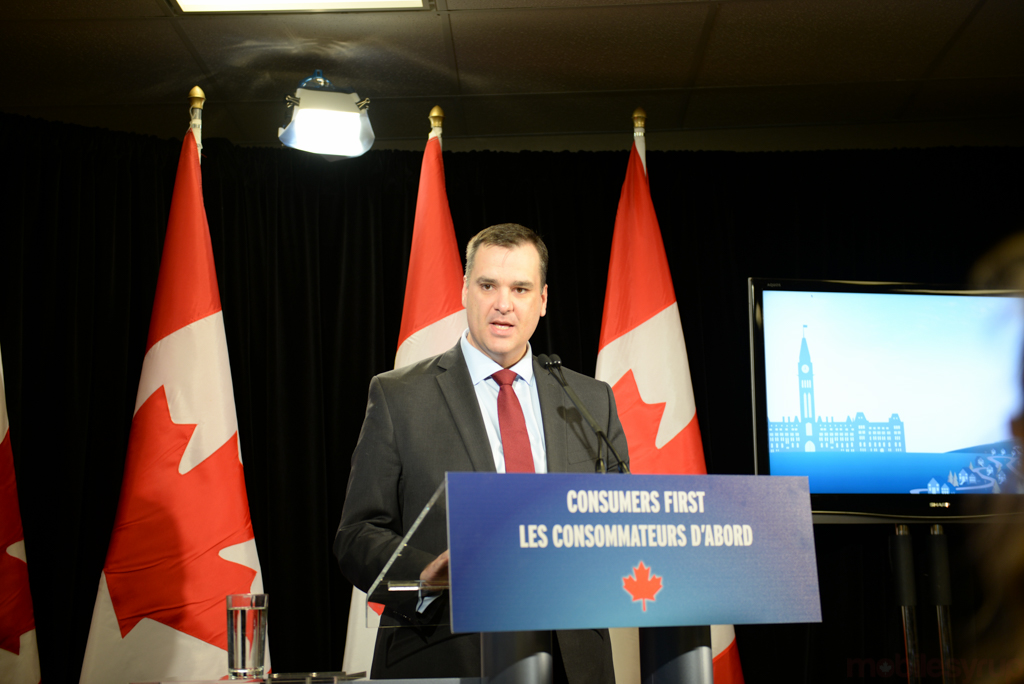
Three weeks and 50 bidding rounds later, the 2500Mhz spectrum auction results are in.
Telus took away the biggest winnings from a rather uneventful auction that saw Rogers and Bell unable to bid in many regions of the most populated regions.
Having already reached the limit set out by Industry Canada for this space from a previous auction, Rogers and Bell were relatively sidelined, Telus, as the only other national carrier flush with spending money, was free to act like a kid in a candy store.
The B.C.-based company spent $479 million for 122 licenses, over 63% of the total revenue raised for the government. The $755 million haul wasn’t close to the amount raised by the 700Mhz and AWS-3 auctions, at $5.27 billion and $2.11 billion respectively, but with Rogers and Bell sitting out many of the rounds, the proceeds were bound to decline.
And though Wind Mobile was the primary acquirer in the AWS-3 auction, where a set-aside allotment practically gave it away, the new entrant failed to secure any licenses in this most recent round.
Along with Telus, which took prime spectrum in every province, which it will likely share with Bell as part of its ongoing agreement, Videotron spent $187 million on 18 licenses, some of which, such as those in Toronto, Montreal, Ottawa, Edmonton, Calgary and Vancouver, were probably being contested by Wind, driving up the price. Videotron now owns a sizable swath of 700Mhz, AWS-3 and 2,500Mhz spectrum, but the company said recently in light of the CRTC’s decision to regulate domestic roaming rates that while it was “a step in the right direction… the final rates set by the CRTC will be decisively important for the viability of genuine competition.”
Eastlink, the Bragg family-owned upstart out of the Maritimes, spent $5 million on 11 licenses, including some outside of its East Coast corridor. It picked up a single license in each of North Bay, Subdury, Kirkland Lake and Grand Prairie, though it’s unclear what it plans to do with the airwaves at this point.
Lest you think Rogers and Bell got sidelined completely for this auction, the two companies picked up 41 and 51 licenses respectively, filling gaps in areas they hadn’t yet reached the cap. Much of the spectrum they purchased was in rural parts of Ontario, as well as areas in the Prairies and Maritimes they hadn’t yet breached. Considering both carriers already have a large Band 7 deployment in many larger cities, these purchases will add between 20Mhz of additional bandwidth in many active areas around the country. Bell also picked up spectrum in Nunavut, Yukon and the Northwest Territories.
Rural providers Tbaytel, Corridor Communications and Xplornet spent $1.7m, $2.3m and $25.7m on various licenses, the latter gaining the relatively undesirable unpaired Band I in most parts of the country. MTS also picked up two licenses in its home province.
Because 2500Mhz spectrum is used in a variety of ways, the winners will perceive this as both a victory for rural fixed wireless internet, or an enabler for greater mobile LTE speeds on existing cellular networks. While the U.S. does not have any Band 7 support at the moment, the proliferation of devices that support nearly every established LTE band, including 4, 13, 17 and 7 made it a relatively safe bet for companies like Videotron and Telus to spend so much (in absolute terms) in this recent auction.
[source]Industry Canada[/source]


